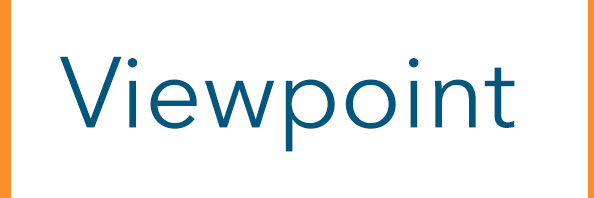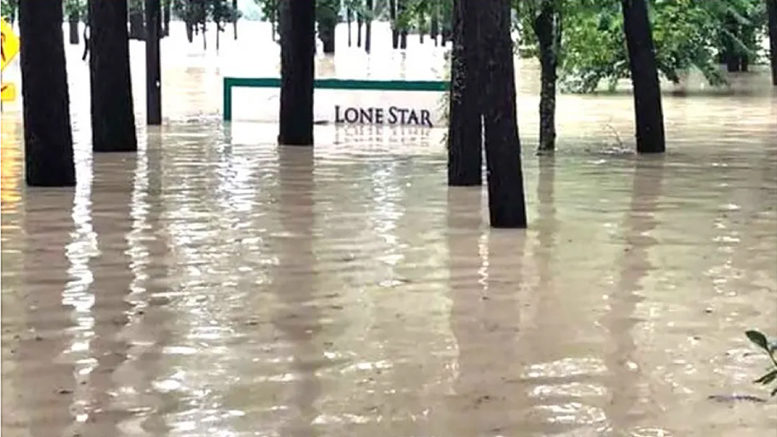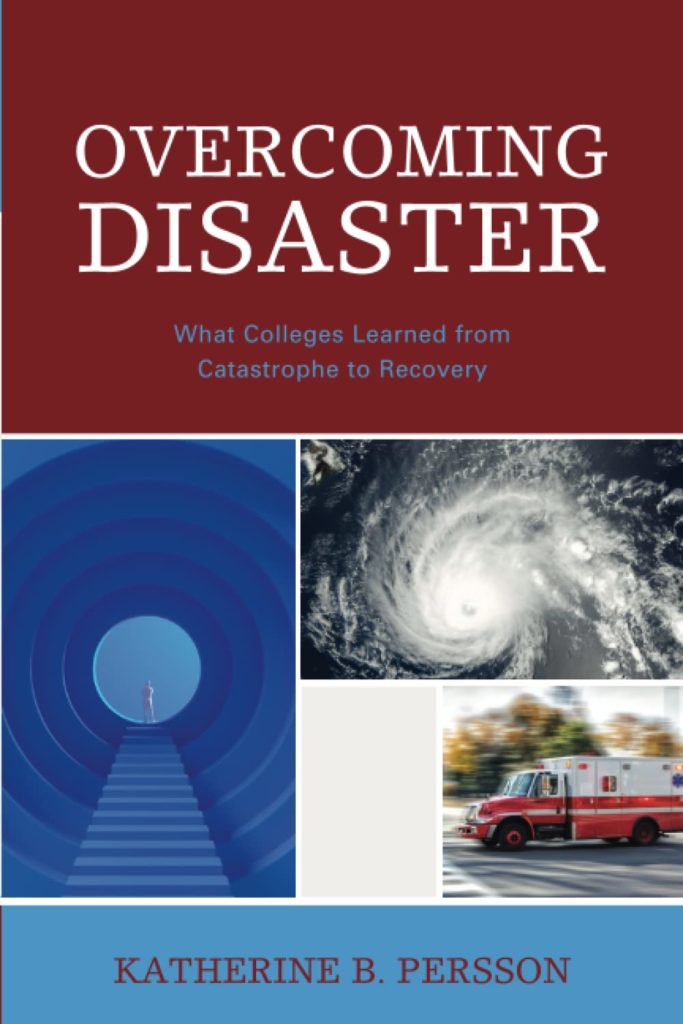Editor’s note: This article is an excerpt from the book Overcoming Disaster: What Colleges Learned from Catastrophe and Recovery (Rowman & Littlefield), which provides lessons learned from the experiences of three community colleges — Lone Star College-Kingwood (Texas), Gulf Coast State College (Florida) and Umpqua Community College (Oregon) — that faced tragedies, including hurricanes and campus shootings.

The single most detrimental aspect to a speedy build-back was not knowing the 60-day grace period end date for FEMA until the afternoon before.
This grace period allows educational institutions, organizations and businesses to waive their normal internal procurement policies to expedite acquiring goods and services during an emergency. This included hiring a construction firm for the build-back, which normally is a several months-long vetting process.
Confusion around the 60-day grace period is understandable, given the flooding event to the Kingwood area occurred August 29; but August 23 was when the governor issued a State Disaster Declaration for 30 Texas counties in anticipation of Tropical Depression Harvey making landfall in the Gulf Coast region. Still, FEMA did not grant a Major Disaster Declaration in response to the governor’s Request for a Presidential Disaster Declaration due to Hurricane Harvey until August 25. The system and college leaders thought the grace period started on August 29, the date of our flooding event.
It didn’t; it started on August 23.
To complicate matters further, FEMA does not reimburse all goods and services at the same rate, with some rates changing depending on the number of days after the incident. The assistance FEMA provides through its Public Assistance, Hazard Mitigation, and other needs assistance programs is subject to a cost share which initially was 75% federal funding of total eligible costs. FEMA later authorized a 90% federal cost share for debris removal and a 100% federal cost share for emergency protective measures, including direct federal assistance, for 30 days from the start of the incident period, and then a 90% federal cost share thereafter.
Dealing with FEMA contacts
Both the chancellor and CFO noted one of the more frustrating aspects of working with FEMA was the turnover of their assigned contacts with no apparent internal communication or sharing of files/reports. They had to send the same report to at least five different FEMA representatives. The constant changeover in FEMA contacts was exacerbated by the college’s lack of understanding of the scope of documentation needed.
The chief financial officer commented: “We should have assigned one System office person to be responsible for the accounting aspect throughout the recovery. We hired one set of consultants that helped us for the piece we hired them for, but we did not understand how much more work still had to be done. We thought they would handle the whole thing start to finish.”
A few of the more entertaining asks by the FEMA contacts were to document the latitude and longitude of each of the six damaged buildings — a physical address would not suffice, and what did the college do with the ashes of the contents discarded. (The remediation firm hauled them to a landfill.)
Also, when FEMA finally visited GCSC to assess Hurricane Michael’s damage several months afterward, they sent an antiquities specialist who was interested in ancient potteries. He was interested in finding artifacts in the root ball dirt depressions left from the blown-over trees. Those trees had been removed and the area bulldozed clean long before the FEMA representatives arrived.
Having had prior experience in working with FEMA would have better prepared the college for the bureaucratic idiosyncrasies demonstrated after the hurricane devastation. As the CFO quipped, “You don’t know what you don’t know until you go through something like this.”
For example, because the COH has dealt with flooding for decades, it has a three-person team dedicated to only FEMA projects. In 2015, they were just closing their books from damages received during the 2001 Tropical Storm Allison. At this writing, they are still working on finalizing the accounting books from 2008 Hurricane Ike.
State-level gaffs
The final comment about bureaucracies and the lack of communication involves a state agency. Federal emergency Harvey relief funds flowed to the Texas Department of Emergency Management (TDEM) for state distribution and oversight. On November 3, 2017, LSC presented a rationale to TDEM to allow them to expedite the process for hiring a construction firm for the build-out of leased spaces and the rebuilding of flooded buildings. They never received a response in spite of contacting their office several times. None of their state legislators were successful in soliciting a response on their behalf. Many states conduct legislative hearings after a disaster to evaluate the state’s response.
Albeit, power companies and cell phone providers are not often thought of as bureaucracies, but they often have a monopoly in small communities. This was the case for GCSC [Gulf Coast State College] in Panama City. When the power company was restoring the electrical grid, including quickly building infrastructure replacing over 7,000 utility poles, many communication networks were destroyed. This would make it difficult for GCSC to offer online instruction. When Verizon’s cell phone towers and cables were destroyed, 70% of the local residents did not have cell phone coverage. AT&T readily stepped in to help.
Quick tips
Recommendations for leaders in the aftermath of a disaster are as follows:
- Hire an experienced FEMA consultant as soon as possible and realize that the scope of work will be larger than anticipated.
- Immediately assign one person to be responsible for the accounting and documenting oversight until recovery is complete.
- Verify the FEMA deadline date of the grace period.
- Contact and learn from other college leaders who have gone through a similar experience.






